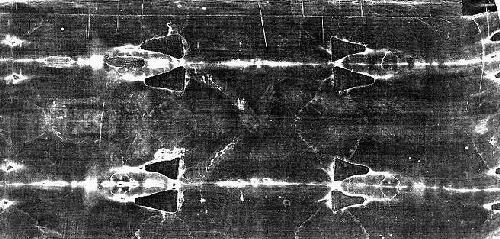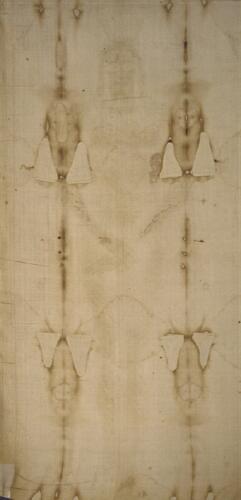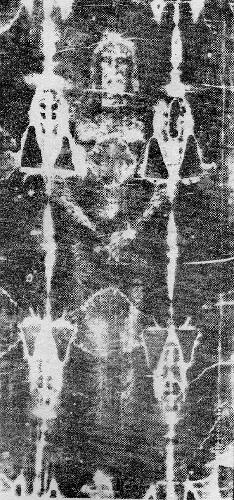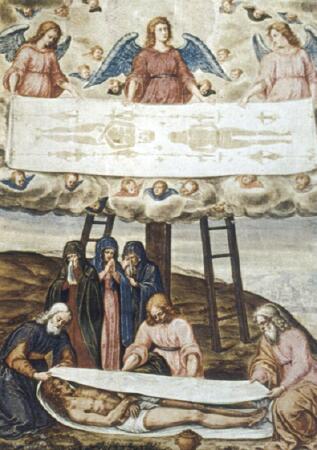

|
by Jodi@theshadowlands.net Hoax or Holy Grail? That is the question every one wants to know. No body has been able to prove that The Shroud of Turin is the burial cloth of Christ. Yet the holds the haunting image of a man's wounded body, fitting the description of Christ. The shroud is undoubtedly old. Its history is known from the year 1357, when it surfaced in the tiny village of Lirey, France. Until recent reports that most of the scientific world accepted the findings of carbon dating carried out in 1988. The results said the shroud dated back to 1260-1390, and this is much to new to be Jesus' burial linen. It is said that the carbon dating is inaccurate. One Dr. Maria Grazia Siliato, Who has studied the shroud for 16 years says the reason that the carbon dating is wrong, is that the fragment tested was a corner of the cloth that had been repaired five times since 1400. Another Dr, Dr. Leoncio Garza-Valdez, after months of examining microscopic samples, concluded in January that the shroud is centuries older than it's carbon date. Dr. Garza said the shrouds fibers are coated with bacteria and fungi that have grown for centuries. He said that the carbon dating had sampled the contaminants as well as the fibers' cellulose. In May 1993, Dr. Garza traveled to Turin, and examined a shroud sample with the approval of Catholic authorities. "As soon as I looked at a segment in the microscope, I knew that it was heavily contaminated, and I knew what had been radiocarbon dated was a mixture of linen, and bacteria, fungi, and bioplastic (A plastic-like coating that is a byproduct of bacteria and fungi.) " Dr. Garza enlisted Dr.Mattengly. Together they are working with an enzyme process to cleanse the contaminated samples. Practicing science with the shroud of Turin puts Drs. Garza and Mattingly in a charged atmosphere. Moving the shroud's origin back several centuries would place it closer to the time of Jesus' death. Adding to that a third member of their team has identified a part of the Shroud's markings as that of blood from a human male. No one has been able to determine exactly how the markings got there, but they appear in bas-relief in a perfect negative image. Testing has proved that there is no way that the image is forged. Major findings: No significant trace of paint, Ink, dye, or stain. It is not the product of an artist. Image becomes life like when their light values are reversed by a photographic negative. The Blood is real blood that has been confirmed by Dr. John Heller. The Wounds are consistent with the Gospel account of Christ's ordeal. A) Crown of thorns. B) Bruising of face. C) Shoulder abrasions D) Knee abrasions E) scourage marks F) nail wounds in hands and feet G) wound in side. H) Legs NOT broken! The shroud has been damaged in a fire, restored, repaired, and has passed through many hands. These things all make it harder to get an actual dating on it. There are many things about the shroud that would prove that it was the burial cloth of Christ, such as a Roman coin over the both eyes minted between 29 to 33 AD. Which says, if these coins were dated at the time of Christ, then the shroud's carbon dating may be wrong, and The Shroud of Turin is the Shroud of Christ. Testing is still being done. Scientist are still skeptic, they are saying that this shroud is ether the shroud of Christ and the physical proof of Jesus existence... Or the most unbelievably clever products of the human mind and hand. It's ether one or the other; there is no middle ground. |



Back to the Mysteries and The Unknown
|
The Lates News about the Holy Shroud of Turin
|